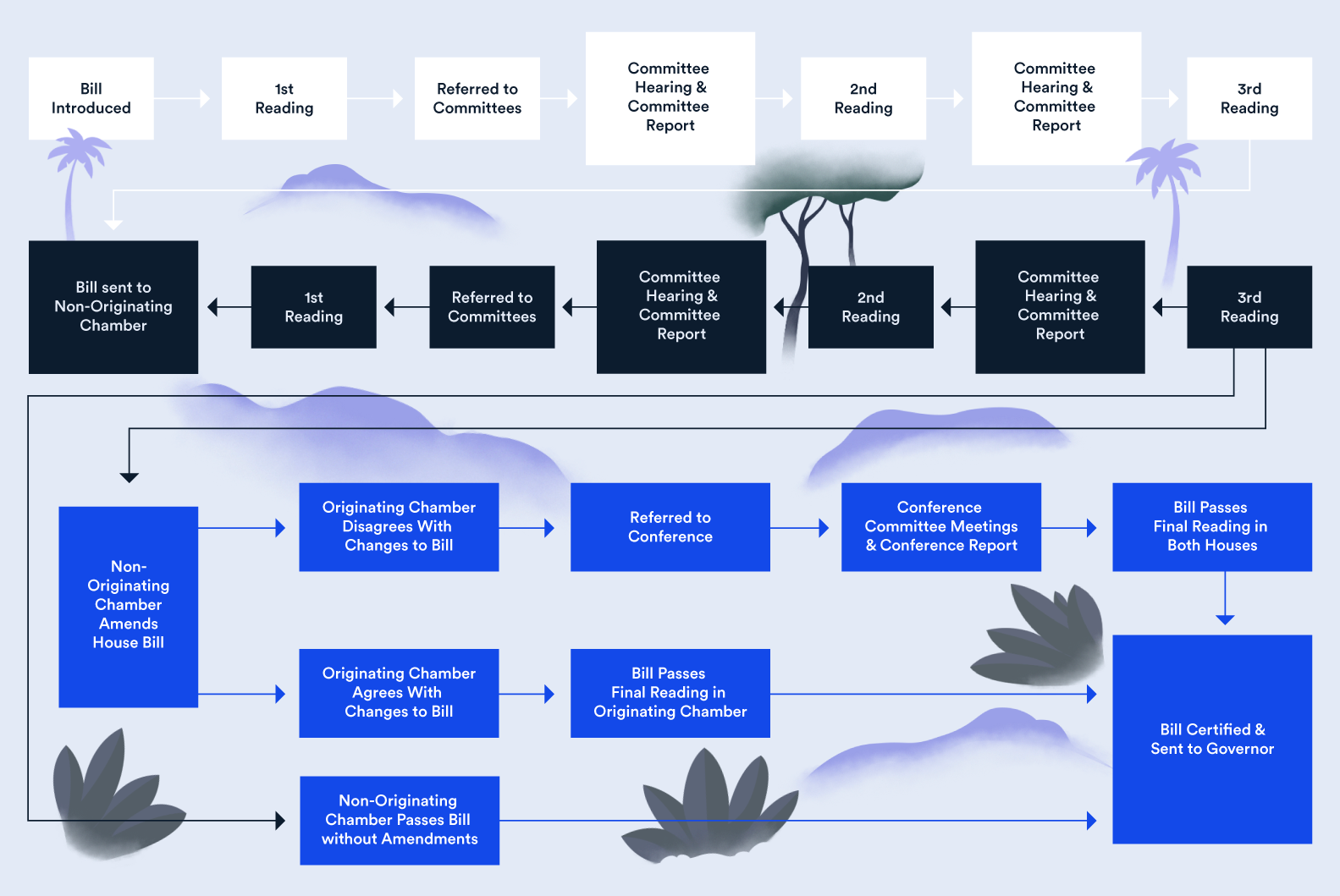How a bill becomes a law
Don’t let it scare you, the process can be simplified to these main points:
- Ordinary citizens can propose legislation to their elected officials, and the elected officials may draft a bill and introduce the bill to their “chamber” meaning the House or Senate.
- The bill is then read, assigned to be heard in relevant committees, and elected officials who are chairs of committees decide if the bill will be scheduled to be “seen.”
- If the bill is not seen by the appropriate committees by strict deadlines, it “dies,” which is why community and expert support for bills for hearings is so important.
- When a bill is passed by committee it goes through the other committees that it was referred to (committees are related to the department of government that the bill will affect such as Health, Education, Consumer Affairs, and any money committees if the bill will have to be appropriated funds; a bill can be referred to multiple committees).
- If the bill passes the first chamber it has to move to the other chamber (House or Senate) of the legislature. For example, if the bill started in the House Committee on Education it will go to the Senate and be heard in the Senate Committee on Education/Higher Education).
- If the bill passes this “cross-over” phase it then must be aligned in both forms (the house bill must look like the senate bill), with differences being worked out in conference committees. Once the differences are aligned the bill is then referred to the general assembly to be put to a floor vote.
- The floor vote is where the bill has to pass the whole audience of the legislature’s elected officials.
- If the bill passes the floor vote it is sent to the Governor for approval and then it is signed into law.
Source: The Citizen’s Guide to Participation in the Legislative Process
Sending in Testimony
Sharing your voice at our State Capitol is super important. Here’s a list of resources so you can read & track bills, and share your testimony.
- Tutorial on How to Submit Testimony Online (Hawaii State Capitol Public Access Room, 2018)
- How to Register on the Capitol Website (Hawaii State Capitol Public Access Room, 2016)
- How to Receive Hearing Notifications (Hawaii State Capitol Public Access Room, 2016)
- How to Search for Bills (Hawaii State Capitol Public Access Room, 2016)
